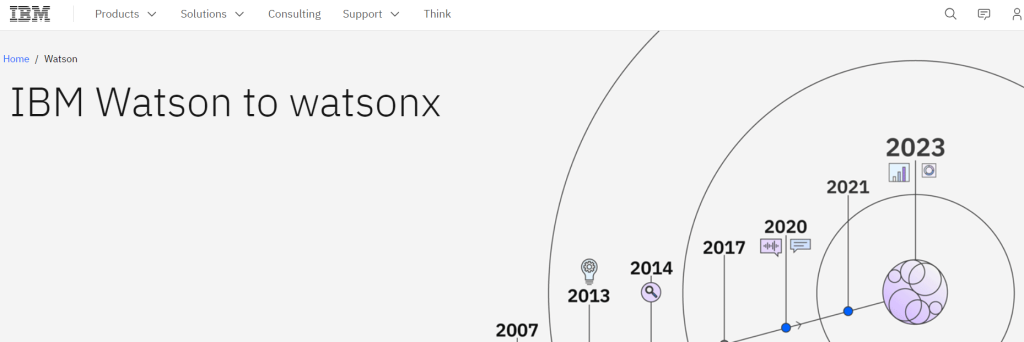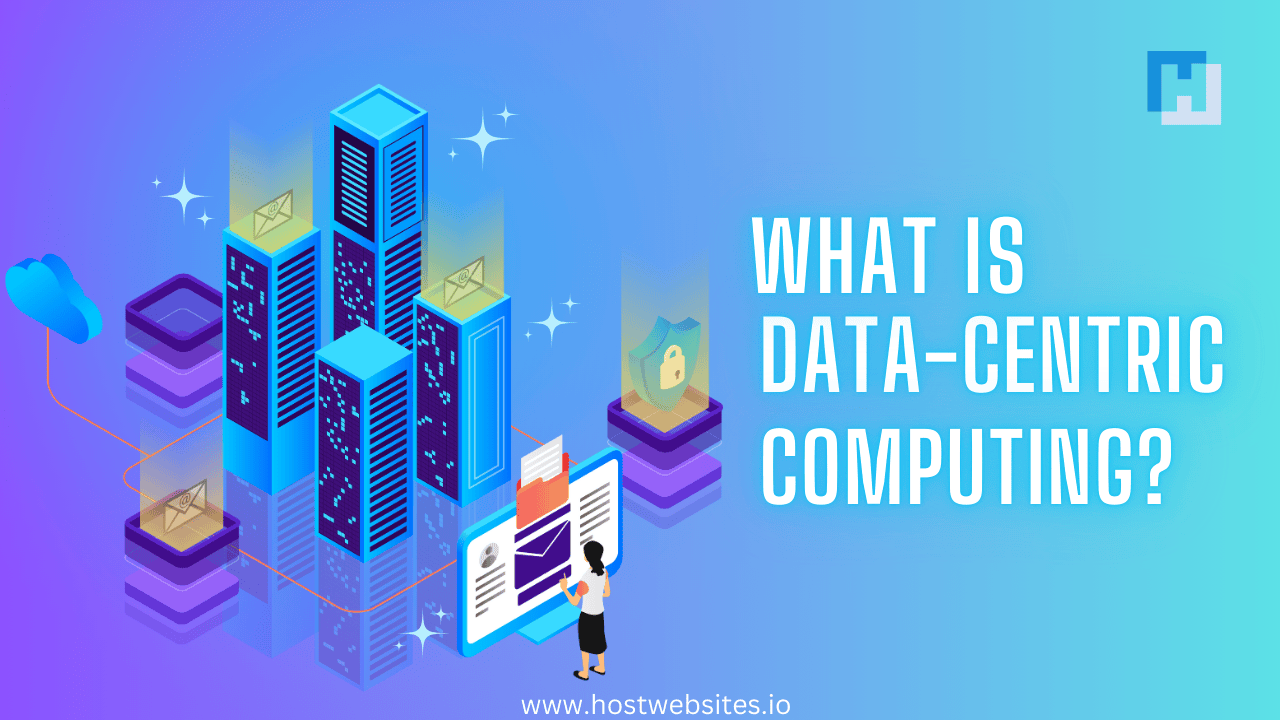Data-Centric Computing is a way of designing computer systems that focuses on handling and processing data efficiently. Instead of just making the computer faster, it’s about organizing and managing data so that it can be accessed, analyzed, and used more quickly and effectively. It’s like arranging your tools in a way that makes it easier to find and use them, rather than just getting more tools. This approach helps in making better decisions, solving problems faster, and improving overall performance in tasks that involve large amounts of data.
What is Data-Centric Computing?

Data-Centric Computing is a design philosophy that places data at the center of the computing process. Unlike traditional computing models, which focus primarily on the processing power of CPUs (Central Processing Units) or the speed of memory, data-centric computing emphasizes the efficient handling, storage, and movement of data.
In simpler terms, it’s like designing a kitchen not just to have powerful appliances but to ensure that ingredients, tools, and utensils are organized in a way that makes cooking as smooth and efficient as possible. This approach is crucial for modern applications, where the sheer volume and complexity of data can become a bottleneck if not managed properly.
Why is Data-Centric Computing Important?
Data-Centric Computing is important for several key reasons, each of which addresses challenges posed by the growing volume and complexity of data in today’s world. It is increasingly important in the web hosting industry, where efficient data management and processing are crucial for delivering fast, reliable, and scalable hosting services. Here’s why this approach is becoming increasingly crucial:
1. Handling Exponential Data Growth
The amount of data generated globally is increasing at an unprecedented rate, thanks to the proliferation of digital devices, social media, IoT (Internet of Things), and other technologies. Traditional computing models, which were designed for smaller, simpler datasets, struggle to keep pace with this explosion of information. Data-centric computing is designed to manage and process large datasets more effectively, ensuring that systems remain efficient and responsive even as data volumes continue to grow.
2. Managing Complex Data Types
Modern data comes in various forms, including text, images, videos, and real-time streams. Each type of data requires different processing techniques and storage methods. This type of computing is crucial because it is designed to handle these diverse data types more efficiently, enabling faster and more accurate processing. This is particularly important in fields like artificial intelligence, machine learning, and big data analytics, where the ability to process complex data directly impacts the effectiveness of the technology.
3. Enhancing Decision-Making
In business, healthcare, government, and many other fields, the ability to make quick, informed decisions is vital. Data-centric computing ensures that data is organized and accessible in a way that facilitates fast retrieval and analysis. This means that decision-makers can access the information they need more quickly, leading to better, more timely decisions. In critical situations, such as emergency response or financial trading, the speed and accuracy of decision-making enabled by data-centric computing can have significant consequences.
4. Optimizing Resource Use
Traditional computing often involves moving large amounts of data back and forth between storage and processing units, which can be inefficient and time-consuming. Data-centric computing minimizes unnecessary data movement, leading to faster computations and reduced energy consumption. This efficiency is particularly important in large-scale data centers and cloud computing environments, where optimizing resource use can lead to significant cost savings and environmental benefits.
5. Supporting Advanced Technologies
Emerging technologies like artificial intelligence, machine learning, and IoT rely heavily on the ability to process vast amounts of data in real-time. Data-centric computing provides the foundation needed to support these technologies by ensuring that data is processed and analyzed quickly and efficiently. As these technologies continue to evolve and become more widespread, the importance of data-centric computing will only increase.
6. Improving Scalability
As organizations grow and generate more data, their computing systems need to scale accordingly. Data-centric computing is designed with scalability in mind, allowing systems to expand their capacity without sacrificing performance. This is crucial for businesses that want to remain competitive in a data-driven world, as it ensures they can handle increasing data loads without experiencing slowdowns or bottlenecks.
7. Facilitating Innovation
By focusing on data as the core of the computing process, data-centric computing opens up new possibilities for innovation. It enables the development of new algorithms, applications, and technologies that can leverage large and complex datasets in ways that were not possible before. This can lead to breakthroughs in various fields, from healthcare to finance to environmental science.
Key Components of Data-Centric Computing
Here are the essential components of Data-Centric Computing.
Efficient Data Management
At the heart of data-centric computing lies the efficient management of data. This involves not only the organization but also the storage and retrieval of data in a manner that enhances accessibility and performance. Techniques like database indexing, data compression, and the use of efficient data structures are fundamental to this process.
Data Locality and Proximity
Keeping data close to where it’s processed is crucial in data-centric computing. Known as data locality, this concept minimizes the time and energy needed to transfer data across the system. Approaches such as in-memory computing and edge computing are employed to achieve this proximity, enhancing overall system efficiency.
Parallel Processing
Data-centric systems often rely on parallel processing to handle large datasets effectively. By distributing different parts of the data across multiple processors that work simultaneously, this method dramatically speeds up computations, enabling real-time data processing on a massive scale.
Specialized Hardware
In certain scenarios, data-centric computing benefits from the use of custom hardware like GPUs (Graphics Processing Units) and TPUs (Tensor Processing Units). These are specifically designed to handle particular data processing tasks more efficiently than standard CPUs, providing a significant boost in performance.
Applications of Data-Centric Computing
Here are the applications of Data-Centric Computing.
Artificial Intelligence and Machine Learning
AI and ML rely heavily on vast amounts of data for both training and inference. Data-centric computing ensures these algorithms have rapid and efficient access to the necessary data, resulting in faster processing times and more accurate outcomes.
Big Data Analytics
Industries across the board utilize big data analytics to derive insights and make strategic decisions. Data-centric computing empowers these industries by enabling the swift processing and analysis of large datasets, leading to quicker insights and reduced decision-making time.
Internet of Things (IoT)
IoT devices generate continuous data streams that require efficient management and processing. Data-centric computing facilitates real-time decision-making and lowers latency, which is critical in applications such as autonomous vehicles and smart cities.
Scientific Research
In fields like genomics, climate modeling, and physics simulations, researchers deal with large, complex datasets. Data-centric computing aids in the efficient processing and analysis of this data, accelerating scientific discoveries and advancements.
Examples of Data-Centric Computing
Here are some examples of Data-Centric Computing in action:
1. Amazon Web Services (AWS) S3

AWS S3 (Simple Storage Service) is an example of a data-centric storage solution that allows businesses to store and retrieve large amounts of data with high reliability and accessibility. It supports scalable data storage and management, which is crucial for cloud-based applications.
2. IBM Watson

IBM Watson, a cognitive computing system, uses data-centric computing to process and analyze large volumes of structured and unstructured data. It powers applications in healthcare, finance, and customer service by providing insights based on massive datasets.
The Future of Data-Centric Computing
The future of data-centric computing looks bright, with demand for faster and more efficient data processing driving its growth. We can anticipate advancements in hardware, such as more powerful GPUs and specialized processors, alongside software improvements that further optimize data management and processing.
The rise of edge computing, where data processing occurs closer to the data source rather than in centralized data centers, is also expected to propel the adoption of data-centric computing. This approach is particularly beneficial for applications requiring real-time data processing, such as autonomous vehicles, smart cities, and industrial automation, as it reduces latency and enhances overall performance.
FAQs
Why is Data-Centric Computing becoming more important?
As the volume and complexity of data continue to grow exponentially, traditional computing models struggle to keep up. Data-Centric Computing is becoming more important because it can efficiently handle large datasets, diverse data types, and real-time processing needs, which are critical in today’s data-driven world.
How will edge computing impact the future of Data-Centric Computing?
Edge computing, which processes data closer to the source (e.g., IoT devices or sensors), is expected to significantly impact the future of Data-Centric Computing by reducing latency and bandwidth usage. This approach is particularly beneficial for applications that require real-time data processing, such as autonomous vehicles and smart cities.
What role will AI and machine learning play in the future of Data-Centric Computing?
AI and machine learning will play a central role by demanding more sophisticated data processing capabilities. Data-Centric Computing will support the vast data needs of these technologies, enabling faster and more accurate analysis, real-time decision-making, and the development of more advanced AI models.
What challenges will Data-Centric Computing face in the future?
Challenges include the need for scalable infrastructure to handle growing data volumes, ensuring robust data security in a data-centric environment, the complexity and cost of transitioning from traditional to data-centric systems, and the requirement for continuous investment in both hardware and software.

